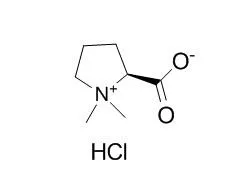Stachydrine hydrochloride is the main constituent of L. sibiricus, therefore L. sibiricus is regarded as a candidate for reducing uterine bleeding in RU486-induced abortion mice by regulating the Th1/Th2/Th17/Treg paradigm.
The purpose of this study was to determine the Th1/Th2/Th17/Treg paradigm in uterine bleeding of RU486-induced abortion mice and to elucidate the immunopharmacologic effects of Stachydrine hydrochloride on inducing the Th1/Th2/Th17/Treg paradigm in reducing the uterine bleeding volume in RU486-induced abortion mice.
METHODS AND RESULTS:
To investigate the Th1/Th2/Th17/Treg paradigm in uterine bleeding during RU486-induced abortion mice, pregnant BALB/c mice were treated with high- and low-dose RU486 (1.5mg/kg and 0.9 mg/kg, respectively), and the serum progesterone (P(4)) protein level, uterine bleeding volume, and proportions of Th1/Th2/Th17/Treg cells in mice at the maternal-fetal interface were detected by ELISA assay, alkaline hematin photometric assay, and flow cytometry, respectively. To determine the regulatory effect of Stachydrine hydrochloride on the Th1/Th2/Th17/Treg paradigm in vitro, splenocytes of non-pregnant mice were separated and treated with P(4,) RU486, and/or Stachydrine hydrochloride (10(-5)M, 10(-4)M, and 10(-3)M, respectively). The proportions of Th1/Th2/Th17/Treg cells were analyzed using flow cytometry. To evaluate the effect of Stachydrine hydrochloride in reducing uterine bleeding via regulation of the Th1/Th2/Th17/Treg paradigm, pregnant mice were treated with RU486 (1.5mg/kg) and/or Stachydrine hydrochloride (2.5mg/kg, 5mg/kg, and 10mg/kg). Stachydrine hydrochloride promoted the protein expression of IL-12 and IL-6, as well as the mRNA expression of T-bet and RORγt, while inhibiting the mRNA expression of GATA-3 and Foxp3. Therefore, the Th1/Th2/Th17/Treg paradigm in RU486-induced abortion mice shifted to Th1 and Th17 after Stachydrine hydrochloride administration. The volume of uterine bleeding during RU486-induced abortion was reduced significantly after Stachydrine hydrochloride administration.
CONCLUSIONS:
The Th1/Th2/Th17/Treg paradigm is closely related to the volume of uterine bleeding in RU486-induced abortion mice. The Th1/Th2/Th17/Treg paradigm induced by Stachydrine hydrochloride contributed to the reduction in uterine bleeding in RU486-induced abortion mice. |






 Cell. 2018 Jan 11;172(1-2):249-261.e12. doi: 10.1016/j.cell.2017.12.019.IF=36.216(2019)
Cell. 2018 Jan 11;172(1-2):249-261.e12. doi: 10.1016/j.cell.2017.12.019.IF=36.216(2019) Cell Metab. 2020 Mar 3;31(3):534-548.e5. doi: 10.1016/j.cmet.2020.01.002.IF=22.415(2019)
Cell Metab. 2020 Mar 3;31(3):534-548.e5. doi: 10.1016/j.cmet.2020.01.002.IF=22.415(2019) Mol Cell. 2017 Nov 16;68(4):673-685.e6. doi: 10.1016/j.molcel.2017.10.022.IF=14.548(2019)
Mol Cell. 2017 Nov 16;68(4):673-685.e6. doi: 10.1016/j.molcel.2017.10.022.IF=14.548(2019)